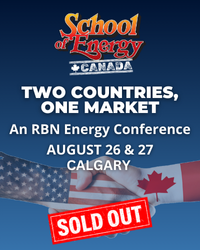If you’re going to be involved in any aspect of U.S. natural gas, it’s critically important to understand how physical, futures, and forward gas markets work and how pricing is determined. That reality was emphasized almost exactly a year ago when physical spot prices for U.S. natural gas had their most volatile and bizarre weeks ever as Winter Storm Uri sent a blast of bitter-cold, icy weather down the middle of the country, wreaking havoc on gas infrastructure just when heating demand was at its highest. Prices in the Northeast, which normally see winter spikes, barely reacted, while prices across the Midcontinent and Texas rocketed to record-shattering levels, above $1,000/MMBtu. The events of the Deep Freeze of February 2021 have since brought renewed scrutiny to the various aspects of the gas and power markets, and a need among legislators, regulators and everyone who deals with energy commodity markets to understand how gas is traded in the U.S. and how prices are set. We’re here to help. So, in today’s RBN blog, we begin a deep dive into the process, quirks and idiosyncrasies of U.S. gas pricing.
During Uri last February, on the same day that physical next-day (spot) prices at some gas trading locations tracked over $1,000/MMBtu, spot price settlements at the national benchmark Henry Hub went only as high as around $23/MMBtu, according to pricing data from our good friends at Natural Gas Intelligence (NGI). The exchange-traded futures market for next-month gas barely reacted, settling at a little over $3/MMBtu. Over-the-counter forward prices for regional hubs rose somewhat but were also relatively muted. By the time the market was scheduling physical gas for March, the panic had dissipated, and month-ahead prices were nowhere near the lofty levels seen for those few days in mid-February. These stark differences in prices have to do with what factors drive the various pricing mechanisms, their respective settlement or delivery periods, and when and how they are traded and used in the gas market. We will get to describing those in the next part of this deep dive. But before going there, we’ll take a trip in the way-back machine to see how these pricing systems even came to be in the U.S. gas market in the first place.
The U.S. natural gas market is one of the most transparent, liquid, and efficient commodity markets in the world. Physical and financial trades are done directly between counterparties through one-on-one bilateral, negotiated transactions and also via open and transparent trading on organized/regulated exchanges like the Chicago Mercantile Exchange (CME) and the Intercontinental Exchange (ICE). Physical trading is anchored by thousands of miles of gathering, interstate and intrastate transport, distribution pipeline networks, and well over 100 distinct trading locations across North America with location-specific price indices. A subset of the physical trades is reported to price reporting agencies (PRAs) like Natural Gas Intelligence (NGI), Platts and Argus, which then publish indices on a daily basis, and there are tough Federal Energy Regulatory Commission (FERC) rules around how prices get reported to those PRAs. Additionally, just about every company involved in the business of buying and selling physical natural gas is required to report their transaction volumes and pricing mechanisms in some detail to the FERC.
Join Backstage Pass to Read Full Article









